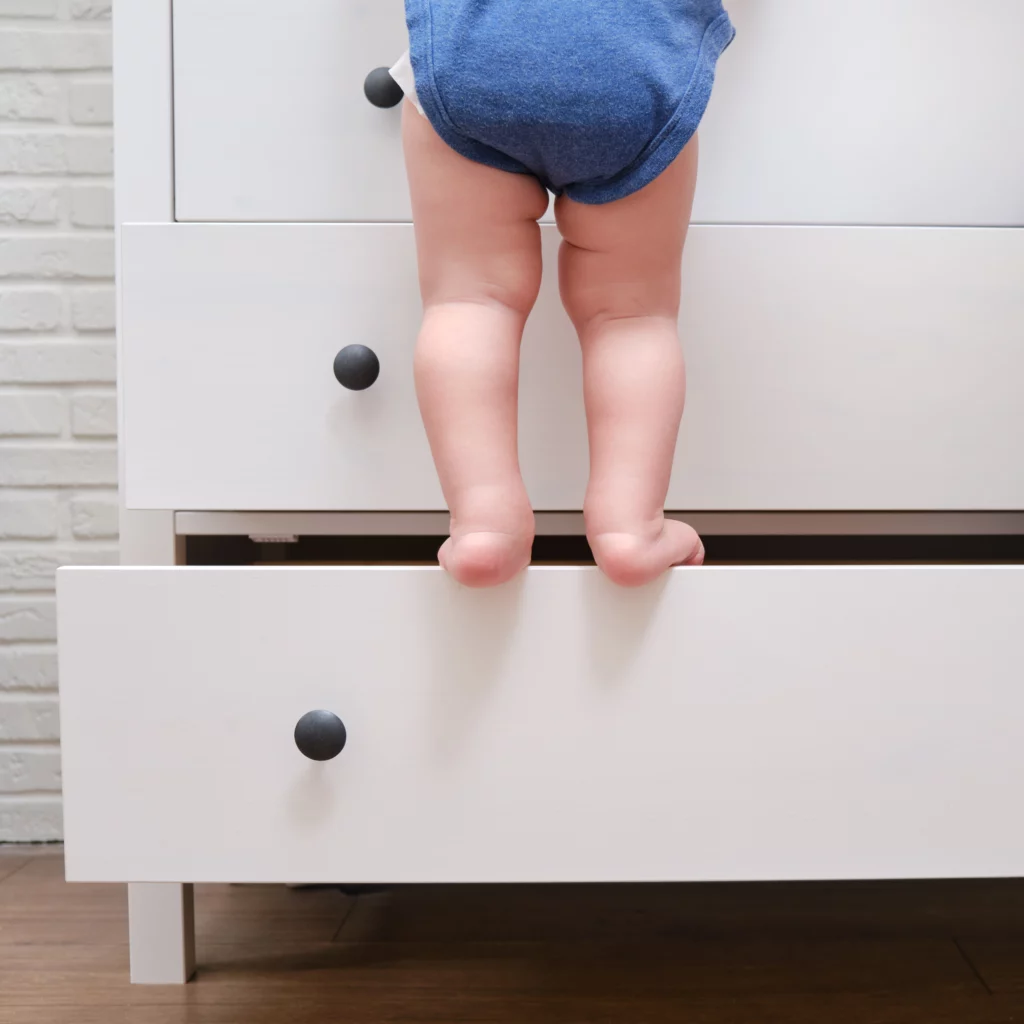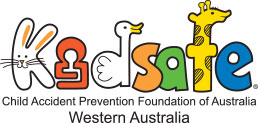
Since the year 2000, there have been 27 deaths due to furniture tip-over accidents in Australia. When furniture topples, injuries can include being struck or crushed by the furniture, which can result in serious injuries such as asphyxiation, fractures, internal injuries and head injury. Kidsafe WA has recently released the Childhood Injury Bulletin: Furniture Tip-over Injuries, summarising presentations to the Perth Children’s Hospital Emergency Department over the five-year period between 2018 and 2022.
The bulletin found children aged between 0 and 4 years of age accounted for 75% of furniture tip-over injuries. Children under the age of five are at particular risk of injury due to their cognitive development and physical size. Children are often keen to explore the environment around them and may climb, reach or pull on furniture, increasing the risk of it toppling.
The most common piece of toppling furniture was the chest of draws, accounting for 22% of furniture tip-over injuries. This was followed by other storage-style furniture, including cabinets/sideboards, cupboards/wardrobes and television/television units. It is unknown if safety equipment such as furniture straps or wall brackets were used in any of the cases. Similarly, adult supervision is largely unknown.
While there are currently no mandatory safety standards in Australia in relation to furniture tip-overs, there are a range of voluntary measures, and product recalls aiming to reduce safety risks. In 2018, an amendment to WA’s Residential Tenancies Act means landlords must allow tenants to attach furniture to a wall to prevent a child or person with a disability from being hurt. A number of factors can impact furniture tip-over injuries, including product design, anchoring furniture and consumer behaviour and awareness. Retailers, manufacturers, legislators and consumers all play an important role. The following preventative measures can assist in reducing the risk of furniture tip-over injuries:
Retailers:
- Should provide safety information around securing furniture in the home.
- Encourage buyers to purchase brackets or furniture straps if not provided with furniture products.
Consumers:
- Choose stable furniture that is low set with a wide base. Thin and top-heavy furniture can easily tip.
- Check that a unit is stable when drawers or cupboards are open and when applying pressure to the open drawer.
- Use furniture straps or brackets to ensure furniture around the home is secured.
- Place items such as televisions towards the back of the unit or mount the television on the wall. Ensure there are no hanging cords. A cord may be pulled by the child and topple the furniture.
- Keep items like toys within the child’s reach and avoid placing attractive items up high to reduce the risk of children climbing furniture.
- Teach children about the dangers of climbing furniture. Ensure children know that they are not allowed to climb furniture.
- Active adult supervision. Know where your child is in the home and supervise them closely.
To view the full report visit: https://www.kidsafewa.com.au/professionals/wa-childhood-injury-bulletins-reports/



